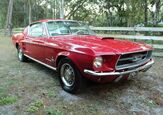2025 Volvo EX90 First Drive Review: EV Flagship Version 1.0

Are you a fan of Volvos and video games, and wish the all-electric examples of the former offered more of the experience of the latter? Then we’ve got good news for you.
Meet the 2025 Volvo EX90, the Swedish brand’s highly anticipated new three-row flagship. The EX90 takes the recipe that has made the XC90 so successful—spacious, comfortable, efficient, and effortlessly cool in a way only the Swedes can manage—and tweaks it for the all-electric era. The catch is that, like a lot of modern video games, the EX90 has a lot of features… or rather, it will, in a future update.
2025 Volvo EX90 Quick Take
The 2025 Volvo EX90 nails the essentials as a smooth, serene three-row SUV that just so happens to be electric. A high price and short features list—either absolute absences or soon-to-come additions—make for a wobbly landing.
What’s new for 2025:
The whole package. Similar in size, shape, and mission to the existing XC90, the EX90 will arrive on North American shores in six- and seven-passenger configurations. At launch, there will be one battery size and two dual-motor setups, making for electronic all-wheel drive. Battery capacity is a big 111.0 kilowatt-hours, of which 107 are usable. The standard outputs are 402 horsepower and 568 pound-feet of torque; opting for the Twin Motor Performance pumps those figures up to 510 and 671, respectively. The latter will be the only option in Canada, at least at launch.
Exterior style: Very Volvo
Cover the badge and it’s still clear this is a Volvo. The E in EX90 might as well stand for evolutionary, with familiar volumes giving it a handsome yet approachable look. The most radical changes are the lack of grille, segmented taillight treatment, and the makings of a proboscis atop the windshield. In order, then: we’ve had tastes of this with the C40 and XC40 (the latter now renamed EX40); even Volvo isn’t immune to the full-width lighting treatment; that lump is there for the Lidar gubbins—more on those later.
We can’t forget those Thor’s hammer headlights either, with an incredibly trick take on pop-up headlights. Rolling stock ranges from 20 to 22 inches, though all vehicles at the launch event are on the latter. We basically have two choices: beige, and a cool gray.
Powertrain and fuel economy: Ample supplies
Every tester also came in the Twin Motor Performance guise, with the added firepower that provides. Whether winding along the gentle curves around Newport Beach, or climbing up into the mountains to the East, the EX90 made short work of whatever was asked of it. Acceleration is never harsh, only assured; Volvo’s team has put a lot of work into smooth pedal tip-in. 62 mph (100 km/h) comes up in just under 5 seconds, and as has been the case for all Volvos for a few years now, the fun is electronically limited to 112 mph (180 km/h).
Earlier Volvo EVs have had some of the most aggressive regenerative braking I’ve witnessed. The EX90 evolves that aspect too, with a pleasantly easy-to-modulate middle ground right out of the box. It’s predictable enough that I even keep it active on the highway.
Official figures peg the range at 308 miles (495 kilometers) on the smaller wheels. Go for the big boys here and it’s down to 294 miles (473 km). My co-driver and I saw around 30 kWh per 100 miles, which translates to 18.6 kWh per 100 km, suggesting a range closer to 350 miles (563 km). Volvo says the EX90 can fast-charge at up to 250 kW, which means the 10-to-80 percent run in just 30 minutes.
Handling and drivability: Big and clever
This is a big, hefty vehicle; a little over 6,000-pounds (2,722-kilograms) heavy. Yet the EX90 is agile over most surfaces, steering like a XC90 with the advantage of Neptune’s gravity (1.12 times Earth’s, natch). That’s what a low-slung battery will do, not to mention the Euro-spec summer tires; our EX90s will show up on all-seasons.
The consistent steering is light on weight and feedback, yet it allows the driver to easily place the EX90 on the road. The twin-chamber air suspension can be firmed up at the press of a screen, and the Twin Motor Performance offers rear-axle torque vectoring too. Combine them and the EX90 becomes surprisingly eager, keen to make direction changes with only minimal body roll. It’s an impressive response to physics, though there is a trade-off…
Ride quality and comfort: Smooth operator
When knocking everything to its sportiest setting—there are no discreet drive modes—the EX90 sacrifices ride quality to a level that would make an X7 M60i blush. It can thread the needle up in the canyons if it absolutely must, but like dad swapping Coors for a case of Mariestads, it doesn’t feel natural. My suggestion? Lean into the EX90’s natural sense of calm, and dial everything back. Not every vehicle needs to be sporty.
I suspect the adjustable settings are only partly to blame. The oversized rolling stock feels hefty, sending thuds through an otherwise calm cabin when any contact patch discovers a lump. Stylists be damned, I’d be curious to see how an EX90 on the stock 20s fares.
Volvo’s front seats are, as expected, quietly excellent. To our surprise, there is no ventilation; it’s available as an option in America, but no such luck in Canada. Nonetheless, they remain supportive without feeling firm. The massage function available on the Ultra trim is one of the best out there, though I don’t love that the programs are only numbered during selection; the name is only visible after.
Interior style and quality: Quiet luxury
The Sand Dune tester I’m in for the day might lack the cool wool trimmings of the other option, but it’s still a satisfying, serene space to spend time. The vibe is natural: earthy tones to the Nordico artificial leather, tasteful filets of brightwork (including a wee Swedish flag ahead of the passenger), generous helpings of light, open-pore wood. Colleagues comment on the huge glass-panel roof and the noticeable heat radiating off it; in California, I get the concern, but this Canadian appreciates the added natural light given the mere weeks of summer we tend to get.
The pared-back design hides a cabin that is roughly the same size as an XC90. This includes the back seats; they’ll work in a pinch, but those expecting the move to electric unlocking added space will be disappointed.
Tech and safety: Work in progress
Here’s where the EX90 stumbles: while there are a great many features it will someday have, many either weren’t ready for this launch event, or functioning in a compromised way.
That Lidar bump? It, along with the cameras mounted just below, will run in “Learning” mode until well into next year, as the full suite of promised driver assists awaits the green light. Speaking of, the adaptive cruise control does well, except it is missing the ability to adjust the gap between the EX90 and the lead car. Apple CarPlay? Coming “in a matter of days,” according to Volvo spokespeople. Volvo has added an NFC card and phone-as-key capability to the EX90’s repertoire; unfortunately there are growing pains, where the vehicle doesn’t sense either despite them being in the car. Without an on/off button like other EVs, and no automatic locking when we leave the vehicle, the only way to get the EX90 to lock up sometimes is to redo the whole parking process and hope it sticks. On that note: the 360-degree camera has shockingly poor resolution for a vehicle debuting in the back half of 2024.
Two important counterpoints here: first, yes, these are pre-productions. And yes, the main 14.5-inch touchscreen works very well, with contextual menu buttons that change depending on the current activity, and an always-on bottom row for easy access to things such as climate. Most of the hiccups can likely be fixed via over-the-air (OTA) updates. Not the infuriating decision to give the driver only two window controls, and a third button to swap between the front and middle rows, however. Did Volvo learn nothing from VW?
Value, dollars, and sense:
In America, the EX90 will launch for $81,290 including destination. Moving up to the Twin Motor Performance is another $5,000, while the Ultra trim adds $4,350 to unlock niceties such as the massaging front seats and air suspension. The excellent, 25-speaker Bowers & Wilkins sound system is probably worth the extra scratch if you’re dropping 90 grand on an SUV, right?
Canada is only doing the Twin Motor Performance, which explains its slightly shocking $113,220 CAD starting sticker. Opting for the Ultra trim is another $5,600 CAD, and the B&W system is $4,450 CAD. Factor in the luxury goods tax and the EX90 gets very pricey very quickly.
Final thoughts: 2025 Volvo EX90 First Drive Review
The good news is that the 2025 Volvo EX90 nails the essentials. It’s smooth, comfortable, quiet, luxurious, and efficient. Most of what’s missing in its current form can be added or tweaked in a future update. But until those updates—patches?—happen, the EX90 feels like version 1.0 of Volvo Electric Flagship.
Become an AutoGuide insider. Get the latest from the automotive world first by subscribing to our newsletter here.
Pros | Cons |
|---|---|
Smooth powertrain integration | Waiting for features to arrive |
Calm cabin design | Tight third row |
Efficiency overachiever | Expensive |

Kyle began his automotive obsession before he even started school, courtesy of a remote control Porsche and various LEGO sets. He later studied advertising and graphic design at Humber College, which led him to writing about cars (both real and digital). He is now a proud member of the Automobile Journalists Association of Canada (AJAC), where he was the Journalist of the Year runner-up for 2021.
More by Kyle Patrick









































Comments
Join the conversation